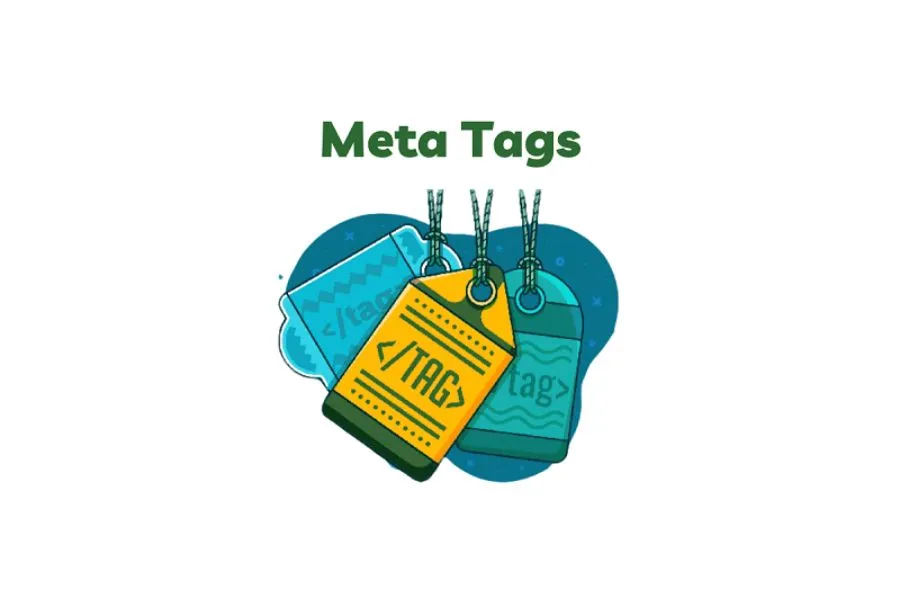Magento SEO: What is It, Importance & How to Optimize
In recent years, a habit formed by buyers is “Search before you buy”. This step decides factors in e-commerce. Because most consumers use search engines to filter, review, evaluate, and then decide to order. For that reason, making your business – or your website – visible in the buying journey is extremely important. This is where we need to talk about an old but effective way to help you appear at the top of the search results list: SEO.
Speaking of SEO, we also need to mention Magento, one of the best eCommerce platforms in the world and the most SEO-friendly. In this article, we will show you some tips on how to improve the Magento SEO.
Claue – Clean and Minimal Magento Theme
We provide an amazing Magento theme with fast and responsive designs. Let’s find out!
What is Magento?

Magento is an open-source software written in the PHP programming language. It is used to create e-commerce websites quickly with all the necessary functions. Currently, Magento has 2 popular versions:
- Free Magento version – Magento Open Source.
- Magento paid version – Magento Commerce. This is a version with many better upgraded and improved features.
What is Magento SEO?
Magento SEO is a set of adjustments specifically for websites running on the Magento platform. It includes many features, such as:
- Friendly search URLs
- Sitemap creation
- Layered page navigation
- Optimize product titles
- Keyword tags
- Meta tags
- Meta tag descriptions
Magento SEO updates the latest SEO ranking factors on the search engine page. It provides a friendly URL structure and gives great options for deploying the necessary meta for SEO. Magento SEO includes specific analytics to help users track visitors. This is also one of the most outstanding features of Magento today.
Why Do We Need SEO for Magento?

Among the many advantages of Magento, SEO friendliness may be one of its biggest pluses.
Magento has a series of standard SEO customization features, such as sitemaps in HTML and XML. In addition, the ability to add images to the sitemap (instead of just adding them to pages). Your SEO staff will have no problem developing a Magento store for web search engines.
However, the standard features are not the only reason why Magento is a great choice. The special point is the ecosystem of modern SEO extensions from different vendors. They make SEO monitoring much superior, not allowing to removal of anything important. The user interface is easy to understand, so anyone can quickly refresh product data without consulting the SEO management department.
How to Optimize a Magento Website According to SEO Standards?
The trend of using e-commerce websites has become increasingly popular. Therefore, the Magento SEO website is no longer strange. However, in reality, not everyone knows how to optimize a Magento website. Here are some specifically for your reference:
Implement SEO-friendly URL Structure
For Magento websites, the URL structure will be designed according to the following standards:
- Product page URL: website.com/category-sub-category/product-name/
- Category page URL: website.com/category/
- Sub-category page URL: website.com/category/sub-category/
Based on the above structure, we see that if you have a large product category, you should choose a flat URL structure. In which the product page URL needs to be structured as follows: website.com/product-name/.
When you go to the Search Engine Optimization section of the Magento backend, make sure you are using the optimal URL structure by resetting the following:
- Popular Search Terms: Enable
- Product URL Suffix: Remove .html
- Category URL Suffix: Remove .html
- Create permanent URL redirect if URL key changes: Yes
- Use Canonical link meta tag for Products: Yes
Also, if you want to enable URL rewriting, go to Store > Configuration > General > Web, then click on the Search Engine Optimization tab. Finally, set Use web server rewriting to Yes, and you are done.
Finally, make sure to remove the default store code from your URL by going to Admin > Store > Configuration > General > Web > URL Options > Add the store code to the URL and then select No.
How to Optimize Meta Tags for a Magento Website?

As we know, meta tags or description tags have a very important impact on your search engine page ranking and the click-through rate you will receive on SERPs. Therefore, you need to optimize meta tags to be user-friendly and search engine-friendly to ensure high rankings.
To create an SEO-friendly meta tag, you should keep the content ranging from about 50 to 160 characters. The meta tag must include the main keyword or add the secondary keywords you are targeting. The content is concise and attractive to users.
Update Your Platform
New versions will have the best support, which is what you need when you want to appear high in web search engines.
In addition, updating to the latest version has many improvements, including upgrades, bug fixes, and, above all, increased security.
Magento itself requires all users to update to the latest version of the theme as soon as it is released. This helps improve the effectiveness of Magento’s SEO support as your site is constantly refreshed and updated.
Another thing to check is to run the theme through Google’s mobile-friendly test. With Google’s mobile-first list almost completely turned out, ensuring your site is mobile-friendly would be irreplaceable to achieve better Magento SEO results.
Check Your Interface
The biggest issue with any interface is how it handles navigation. A great way to check this is to disable CSS and JavaScript (the Web Developer toolbar makes this easy). This allows you to see the HTML structure. Magento provides a fairly extensive list, arranged alphabetically and not numbered. We recommend using an interface that is not too “out of place” if you are not completely sure what you are looking for.
Another thing to check is to run your interface through Google’s mobile-friendly test. Making sure your site is mobile-friendly is a must for better Magento SEO results.
Use Appropriate Keywords

On Magento websites, the product title and description are already set but have not been optimized for SEO standards. Therefore, you can adjust according to the following: “Content => Design => Configuration”.
In the interface of the adjustment, the “Design Configuration” table will be displayed. You should choose a store view if you want to edit. Next, click on “Other Settings => HTML Header” and try to set the title and description so that they are not duplicated but still contain as many keywords as possible. Note:
- When writing the title, the main keyword should be at the beginning of the sentence as much as possible to help search engines easily recognize it.
- The description needs to contain the main keyword, the content should be concise and more SEO-friendly.
Optimize Product Images
One of the secrets to successful Magento SEO is to optimize product images on the website. Accordingly, you need to optimize according to the following notes:
Image Size
The image size can affect your Magento SEO results by slowing down your page load speed. Hardly anyone has the patience to wait more than 3 (to 5) seconds for an image to fully load. Therefore, all product images need to be sized correctly and not larger than the maximum recommended image size.
Image Names
Before uploading your product images, remember to rename them. The name of the image will become part of the image link, so you need to name it in English or your language without accents. Using simple and clear words will help both you and search engines make your site visible.
Avoid names with numbers and characters. When you search for images of sneakers on Google, all the results will have the word “sneakers” in their name (along with some descriptive information). You will hardly see any images named IMG2020 or similar.
Pay attention to building the alternative text section so that search engines, when scanning your website, will rely on it to understand the meaning of your images and rank them. To increase the effectiveness of Magento SEO, you should build alternative text containing related keywords.
Good Page Titles Help Magento SEO
Page titles can help or hinder your SEO, especially if you’re working with an online store that relies heavily on search traffic. Page titles have many benefits – they drive higher click-through rates to your site and improve your visibility.
When your page titles have more keywords that include the name of the product or its features and other information related to them, your page will definitely be more likely to appear when your customers search for those products. Your product page title should be straight to the point and clear. It should include the name of the product along with a description.
For example, you would want to click on a page titled “ArrowTheme – Design, Build & Launch Professional E-commerce Websites” instead of a page that just says “ArrowTheme”!
Build Fresh Content for the Website
Even though it is an e-commerce website for selling, content is also a very important factor. You need to build non-duplicated, 100% new content for Magento SEO to be successful. If the content is duplicated, your website will be penalized by the search engine and will not appear on the search page anymore.
Build a Scientific Internal Link Network
For SEO of any type of website, internal links are always a must. Based on the internal links in the website, the search engine will determine the consistency of the content and topics of the posts on the website with each other.
Please note that to build good multi-links, you should use the “Related products” items. Then, you click Category => Product to easily set up links between items and products. Next, you choose a product to edit and click “Related products => Add related products”, and the installation is complete.
Improve Website Loading Speed

Do you know that website loading speed is also one of the factors affecting the website’s ranking on the search engine page? Google only highly appreciates websites with fast loading speeds of under 3 seconds. Over 3 seconds, websites with slow loading speeds will be ranked lower. To increase page loading speed, you need to note:
- Turn on all storage features by accessing Storage => Configuration => Advanced => System => Full Page Cache.
- Next, merge the CSS and JS files, you access Store => Configuration => Advanced => Developer => JavaScript Settings / CSS Settings.
The above methods are considered effective in improving faster loading speed, helping users feel happier and more comfortable.
Create a Sitemap
To successfully do Magento SEO, do not forget the step of creating a sitemap. For Magento, building a sitemap is very simple. Each different type of code has a different way of creating a sitemap. Currently, people use 2 types of code XML and HTML to create a sitemap for customers.
However, if you want to change the HTML sitemap configuration, just access Catalog => Google Sitemap => Add sitemap. As for the XML sitemap, you need to follow these steps: Click Marketing => Sitemap. Next, you add the web, add the name and profile path for the new website. Then, you click Save & Create. You’re done.
Edit Robots.txt File
In case your website is newly built and there are no real products on the page. At this time, Magento will automatically add the robot.txt file to the website. Search engines will not index it on search pages.
In addition, according to the default settings of Magento 2, it is set to INDEX, FOLLOW. In case you want to change it, just adjust it according to the following steps: Content => Design => Configuration. Next, you choose the store view that you want to change the Robot.txt settings, and you’re done.
Conclusion
In this blog, we have shared with you how to optimize Magento SEO completely free with the simplest operation. Hopefully, the useful information above will help you easily find the best solution to improve your website’s ranking on the current search engine page.
Read more: How to Become A Magento Developer With No Experience?
Contact US – ArrowTheme:
– Email: [email protected]
– Facebook: Facebook.com/ArrowThemeTeam
– Website: ArrowTheme.com



